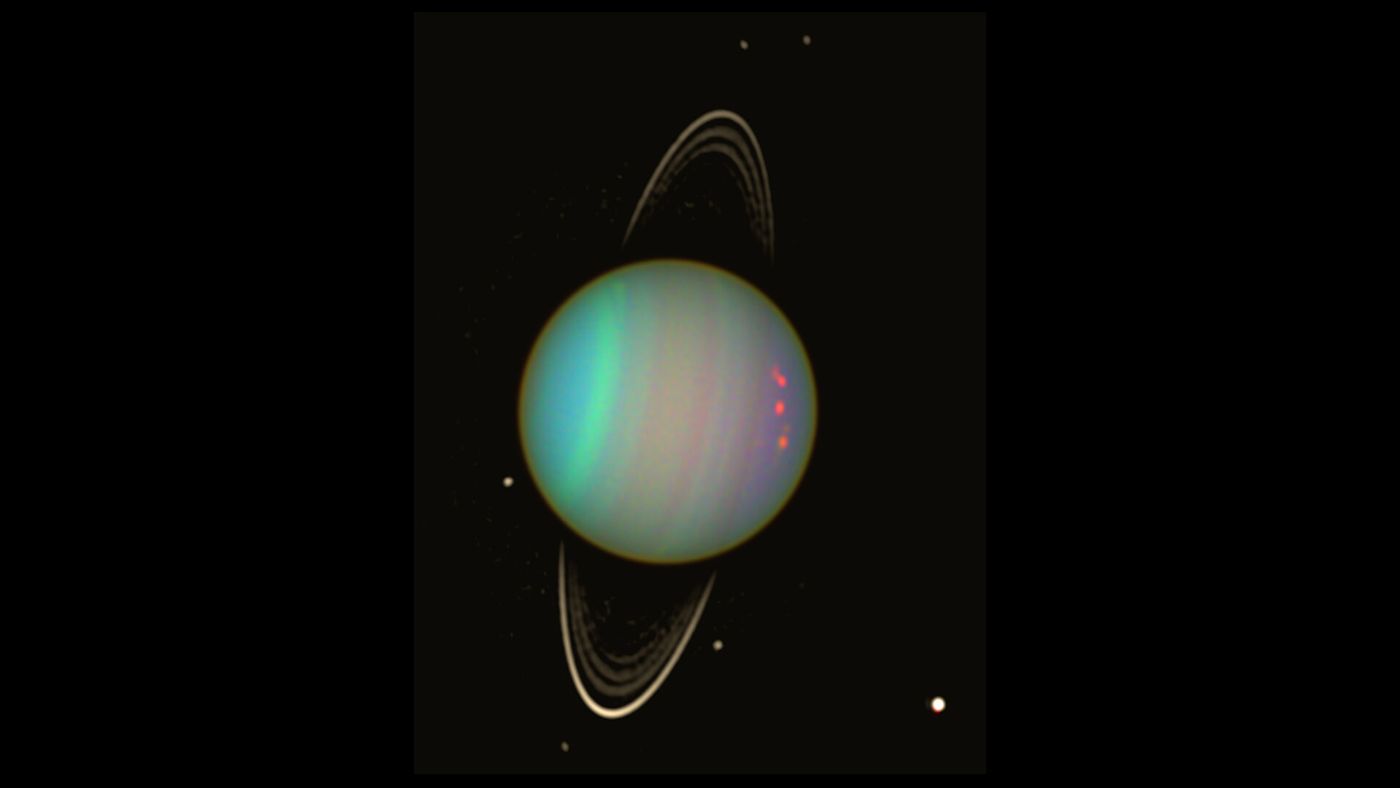Are We Any Closer to Learning How Uranus Became So Tilted?
Every planet in the solar system sports distinct properties; however, Uranus seems to be the elephant in the room. It’s the only world in our stellar neighborhood that spins on its side, and astronomers have been trying to explain why for eons. Still, it seems like scientists are no closer to finding the answer today than they were 30 years ago. Or are they…
Image Credit: NASA/Erich Karkoschka
NASA’s Voyager 2 mission was the first and only spacecraft to get anywhere near Uranus, and that happened a long time ago – in 1986. Space probes have come a long way over the years, adopting powerful new technology and observation equipment, and it remains unclear whether NASA will ever send another spacecraft toward Uranus to study the planet in greater detail.
In the meantime, astronomers haven’t had much choice but to analyze what little data they do have at their disposal. Fortunately, computer modeling can help astronomers with some of the grunt work by augmenting that data. Upon entering it into a virtual physics engine, scientists can devise and validate their theories to help explain Uranus’ unusual situation.
A team of scientists led by Jacob Kegerreis of Durham University followed this same approach to discern whether a giant impact could have caused Uranus’ bizarre circumstances. Their findings, published last year in the Astrophysical Journal and presented at a recent American Geophysical Union meeting, denote that this theory may hold some water after all.
“We have performed a suite of smoothed particle hydrodynamics (SPH) simulations to investigate in detail the results of a giant impact on the young Uranus,” the researchers explained. “This cataclysmic event could explain Uranus' remarkable 98° obliquity, and we also study the internal structure, atmospheric retention, and orbiting debris of the post-impact planet.”
Related: Uranus' clouds probably smell like farts, study finds
You can check out the fruits of their data simulations below:
If you look closely during the collision simulation, you’ll see that a whole host of specks called “particles” make up the splash. The researchers note that their simulation used more than 100 million individual particles, which is anywhere from 100 to 1,000 times more than what’s typically used in the average study. To accomplish this feat, the researchers employed a supercomputer.
The results validated the notion that an impactor twice as large as Earth could have had enough persuasion to cause Uranus’ strange situation today. A large percentage of the impactor’s mass would have fallen into Uranus’ core, but some of its material would have ejected above Uranus’ outer layers, reinforcing the ice layer and inhibiting heat flow from the planet’s interior.
Related: Some of Uranus' moons might be set to collide with one another
These findings, the researchers say, could help elucidate why Uranus appears to be so cold and why the planet sports such a wonky, asymmetric magnetic field.
At the end of the day, a theory is still just a theory; but the high-resolution computer models used in the study have made the collision theory more challenging to refute by illustrating how it very well could have resulted in what Uranus has become today.
It should be interesting to see whether future studies align with the latest findings or discover something different. After all, putting a fresh set of eyes on a case tends to result in new outcomes, and that’s good for science.
Source: Popular Science, The Astrophysical Journal, AGU Fall Meeting 2018









